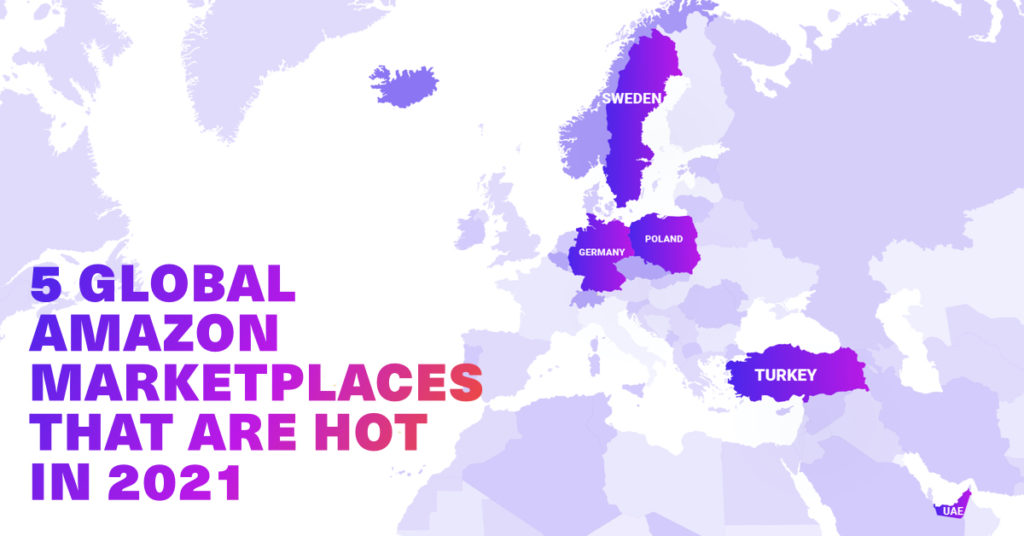Global opportunities for Amazon sellers are expanding rapidly.
Our own Liz Downing recently convened a panel of experts on Amazon global marketplaces to discuss strategies and opportunities.
A lot goes into expanding to a new marketplace. Each marketplace requires thoughtful planning and its own unique strategy. “You have to have a great international advertising strategy” Liz explained.
“But before you can do any of that, you’ve got to get your products into the different Amazon marketplaces. You’ve got to figure out how you’re going to pay for the products. You’ve got to be allowed to sell those products on the marketplaces. And you’ve got to have listings that talk to the people in those marketplaces.”
That’s why Liz brought together the expert panel that covered these strategies as well as specifics of several marketplaces that are on fire right now.
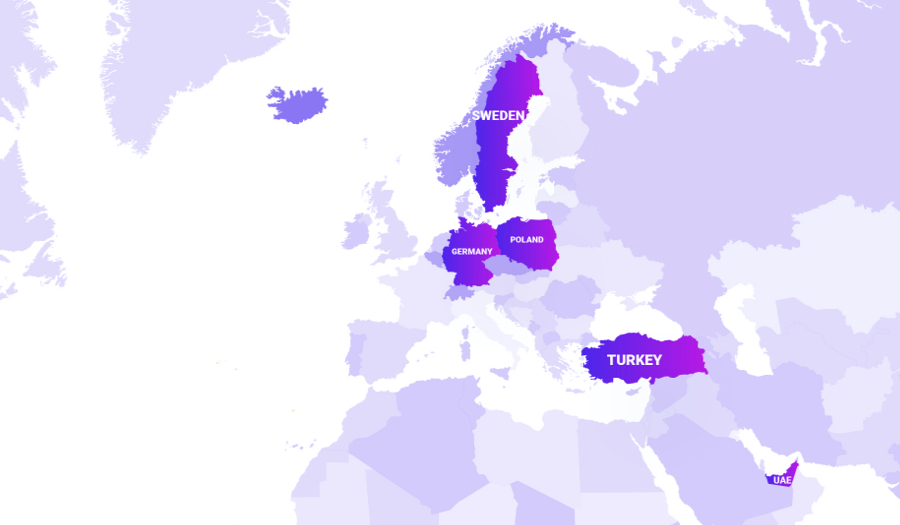
The Rapid Expansion of Amazon Marketplaces
“In the midst of a global pandemic and everything else, other marketplaces, which were established before the pandemic and continue to exist, thrive, and grow, “ Liz pointed out.
“It’s so very exciting for ecommerce brands who are looking to expand their reach and reach new audiences through Amazon platforms.”
The charts everyone in the industry is looking at to understand where the sellers are don’t even show Turkey, Sweden, or Poland as Amazon marketplaces because those are so new.
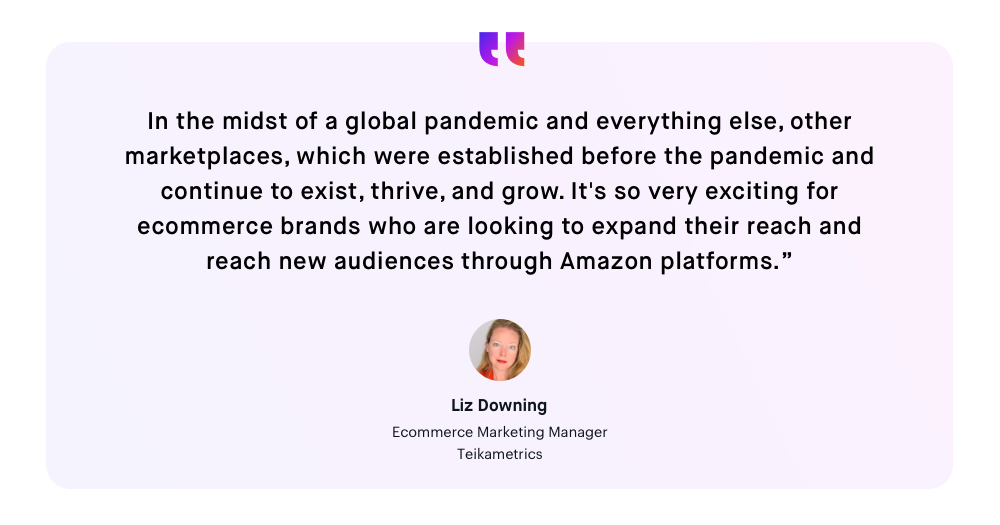
Ads Available on Different Amazon Marketplaces
In terms of advertising opportunities, sponsored ads and stores only launched in Brazil in December and in the Netherlands in January.
Sponsored Products and Sponsored Brands are pretty much everywhere. However, video ads are not available in Brazil, the Netherlands, or Singapore. Sponsored Display ads are not available in Mexico, Brazil, Saud Arabia, or Singapore, and DSP is not available in Singapore.
The way ads are available and the options available to any given ad type also varies from marketplace to marketplace.
Teikametrics Flywheel ad optimization is currently available for 11 Amazon marketplaces: the United States, Canada, the United Kingdom, Germany, Australia, India, Spain, France, Italy, Japan, and Mexico.
A Hack For Shipping to Germany
Germany is the largest marketplace in Europe. That’s in part because people in European countries where Amazon doesn’t have a marketplace get redirected to buy from the German marketplace.
Jana Krekic shared the hot tip that eco-friendly products are currently everywhere in Germany, and in particular, “wooden toys are making it insanely big in Germany. So if you’re selling wooden toys, go to Germany, it’s going to be awesome.”
Pearl Ausch talked about how Brexit changed shipping in Europe, and in particular, the challenges sellers have been facing in getting products to Germany.
Sellers had previously been using the PAN-EU option. Under this system, they could ship goods for Europe only to the UK and then Amazon would fulfill. As Pearl explained, “Amazon would then disperse their inventory to places outside of the UK, such as Germany, France, Italy, Spain.”
Brexit changed that, and one result was the discovery that German customs are very strict, and therefore holding up shipments for a long time.
”As many sellers are experiencing right now, if they’ve been shipping by truck or by container load, they are experiencing delays for many months,” as Pearl has witnessed.
So they started looking for another way to get goods into Germany to fulfill into the German marketplace. The clever hack was to take goods into Germany through the Netherlands where customs is not as difficult to get past. To do this, sellers don’t need a VAT number for the Netherlands, they just need one for Germany.
This solution is important because it enables sellers to maintain their stock in Germany and deal with restock limits. In Pearl’s words, “These are some solutions that you could really use to help you with Brexit plus with the restock limits. You have a faster turnover, you don’t have to ship that much, and it’s just very seamless.”
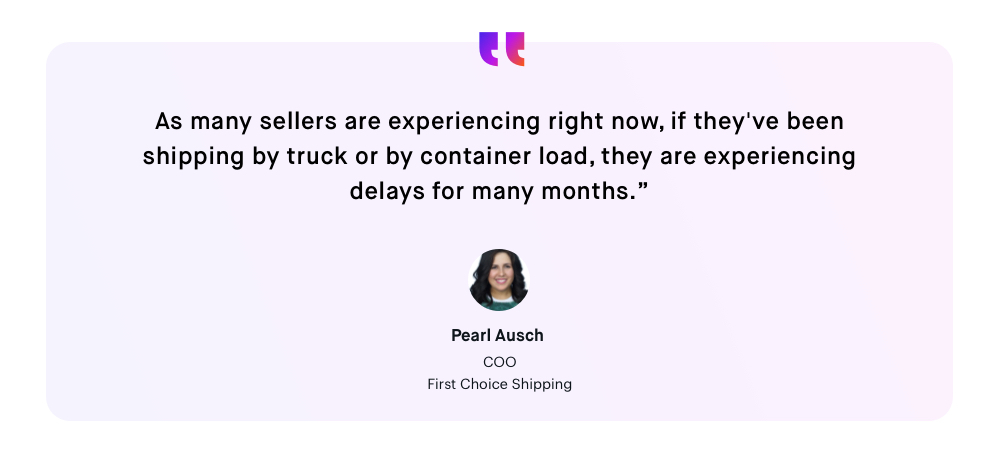
The New Swedish Marketplace Isn’t A Joke (After All)
As mentioned above, Sweden is one of the newest marketplaces for Amazon. There’s great potential there despite a difficult beginning.
Jana describes the launch of the site as having, “a really rough start because basically the whole website was just translated with Google translate. They even put an Argentinian flag instead of Swedish flag to begin with on the website.”
Despite all that, Jana sees Sweden as presenting a great opportunity. She said, “It is a very big marketplace. It has great potential.” There are things Amazon can continue to do to build out the infrastructure and make Amazon Sweden a really strong marketplace.
Jana observes that Sweden has a very big online and ecommerce culture so they’re likely to be eager adopters. Home electronics, healthcare products, and furniture are the dominant categories.
FOMO Over The Polish Marketplace
Poland is the hot place to be selling. Similar to Sweden, there’s a strong ecommerce culture.
“It is a really interesting country when it comes to ecommerce because they have 12,000 online stores and their marketplace Allegro, has been one the top worldwide marketplaces out there,” Jana explained.
“And I’m sure a lot of you know Zalando, one of the biggest German marketplaces. Last year, they also expanded to Poland, Sweden, and Spain. So they were actually a little bit ahead of Amazon. So I’m pretty sure that, if Zalando was going this way, there’s probably something good happening in Poland.”
So, Jana definitely recommends expanding into the Polish marketplace: “Poland is something that everybody is rushing to. There’s this FOMO about Poland and I would definitely suggest you try your best selling products on this specific marketplace”
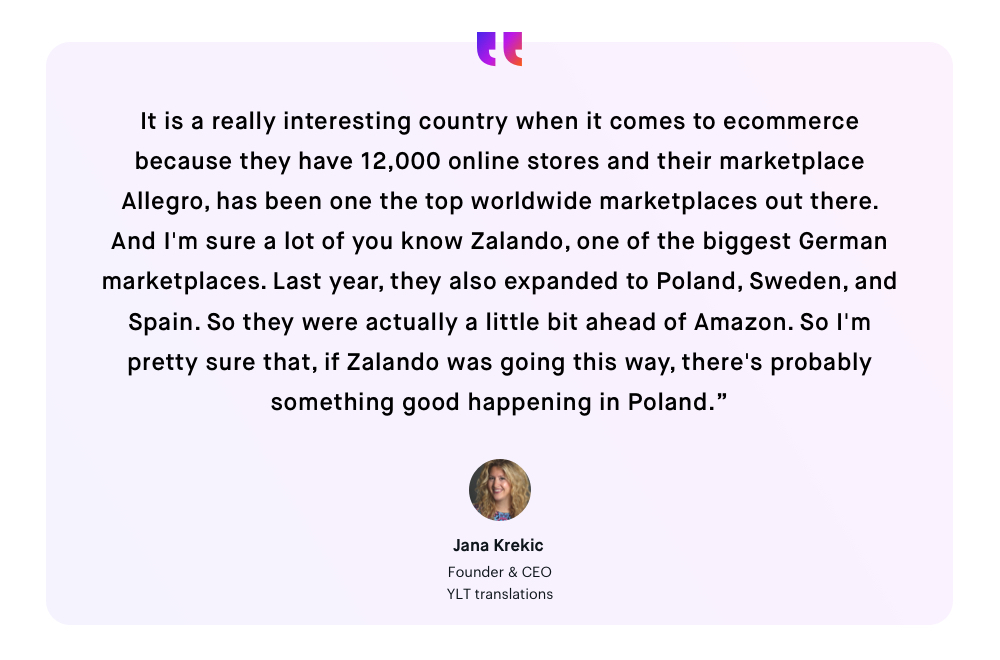
What Expats Want In The United Arab Emirates Marketplace
Jana raised the point that the United Arab Emirates (UAE) is another interesting marketplace option.
One thing to know about the UAE is that you can use English because the population includes a lot of expats. That saves you from having to use translation services.
Jana says, “I would use American English and American keywords because of the community that’s being sent for work over there.”
One category she draws our attention to is Home and Furnishings, which has only a few thousand products compared to the 40,000 products in the U.S., making it a great opportunity.
“I’m pretty sure that you can make it big in the category of home decor and furnishings because expats come and go, and usually people over there rent out empty apartments and then they need furnishings,” explains Jana.
But act now because Jana says, “I don’t know what’s going to happen in six months, but right now it’s still a really good category to start selling in.”
What You Don’t Know About The Turkish Marketplace
Turkey is the new hot marketplace that sellers need to understand before they expand to it.
One thing that works well for sellers expanding to Turkey is that the marketplace has familiar holidays like Black Friday and Cyber Monday.
Jana has seen sellers being very successful on this marketplace and specifically capitalizing on these holidays: “Turkish retailers have thrived with huge discounts that they offer. This is good because Turkey fits right into that ecommerce culture that everybody’s familiar with.”
Something to be aware of is that shoppers in this marketplace mostly use desktop computers and tablets, not cell phones, to make purchases. So it’s important to optimize for that desktop experience.
Whereas Home and Kitchen is a dominant category across other marketplaces, it really isn’t a big one on the Turkish marketplace because of the Turkish culture. Shoes and Clothes, Consumer Electronics, and Personal Care/Cosmetics are all big there.
Turkish shoppers also are big adopters of YouTube, so YouTube ads and partnering with YouTube influencers are a place to consider investing. In Jana’s words, “Definitely YouTube would be your main focus if you want to spend some money on ads over there.”
Amazon Opening To Global Sellers
Another wrinkle in all this is that the same time you’re thinking about expanding to other global marketplaces, Amazon has been opening the opportunity to sell up to businesses from more parts of the world. That means more competition across Amazon marketplaces.
Melanie Shabangu said, “I’m sure that you guys are aware that Amazon is adding another 85 countries to be able to sell or list their products on Amazon platforms. I think that makes a total number of about 188 countries. Now, that’s a lot of countries.”
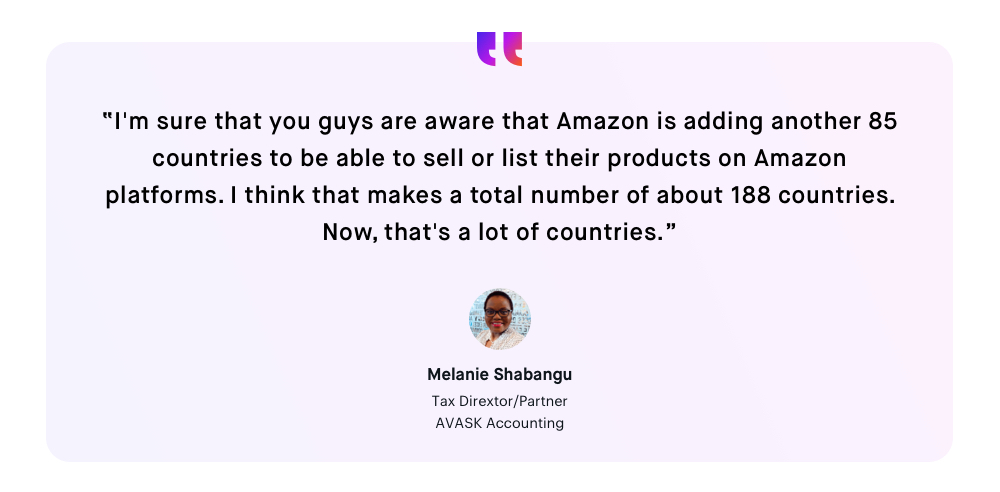
With so much competition you need to know how to advertise on the Amazon platform as well as off it in each of the marketplaces.
“Because it just means that yes, there will be a lot of competition for new sellers that are coming up on the space,” said Melanie. “I know that many sellers think I’ll just put my products on Amazon and they are going to sell. Those days are over.”
So, turn to experts who can help you to localize and grow wherever you expand to. Amazon is getting bigger and more complicated and ecommerce sellers are in for an exciting ride.


